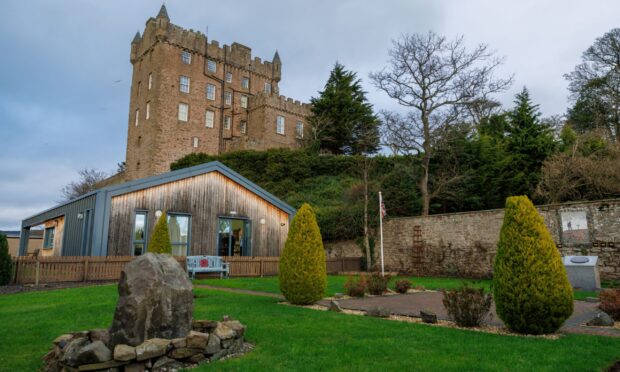Calls have been made for a national memorial to airborne photographers who snapped sensitive wartime bombing targets.
The RAF Photographic Reconnaissance Unit (PRU) memorial would include Perthshire man Alastair “Sandy” Gunn, who was executed by the Nazis following The Great Escape from the Stalag Luft III prisoner of war camp.
The suggestion was made by MP Luke Graham, whose Ochil and South Perthshire constituency includes Sandy’s hometown of Auchterarder.
As well as marking the 75th anniversary of D-Day, this year also marks the same anniversary of the Great Escape, in which 76 Allied prisoners-of-war escaped. Fifty of the escapees were murdered by the Gestapo upon their recapture.
Sandy, who had been placed in the camp after being shot down over Norway in 1942, was among the 50. Had he survived, he would have celebrated his 100th birthday in September.
The PRU performed clandestine photographic reconnaissance over Europe throughout the Second World War.
It was highly dangerous work as the Spitfires were only equipped with cameras, not guns or armour plating, and the rate of attrition was high for those who flew them, with a 30% chance of surviving for 14 weeks compared to the 44% loss rate in Bomber Command.
Due to the solitary nature of their work, of the 209 men lost from the Photographic Reconnaissance Unit, 74 have no known grave.
Despite this, there is no national memorial to the men who flew on these missions.
Mr Graham MP said: “This year would mark the 100th birthday of Sandy Gunn, who grew up in our constituency and whose name will forever be inextricably linked with the tragic murder of fifty prisoners-of-war, of which he was one.
“However, before that he was a pilot for the Photographic Reconnaissance Unit, performing highly dangerous, but crucial strategic reconnaissance work for the RAF. Thirty-five percent of the men lost by Sandy’s unit have no known grave, yet there is no national memorial to the brave men who lost their lives.”
Sandy’s Spitfire was rediscovered in Norway last year by the Spitfire AA810 project team, and featured on the BBC TV program, Digging For Britain.
Tony Hoskins, of the Spitfire AA810 project, added: “The mission to tell Sandy’s story is something that has motivated me for several years now. The day that we found his Spitfire in Norway, his name was known only to a small handful of people.
“However, with Luke Graham’s help, Sandy and his colleagues who flew in a unit that suffered such horrendous losses stand a real chance of being recognised nationally.”










